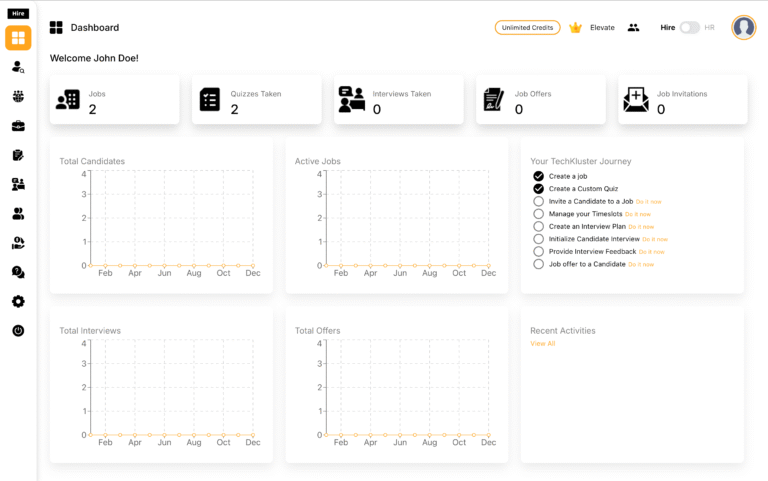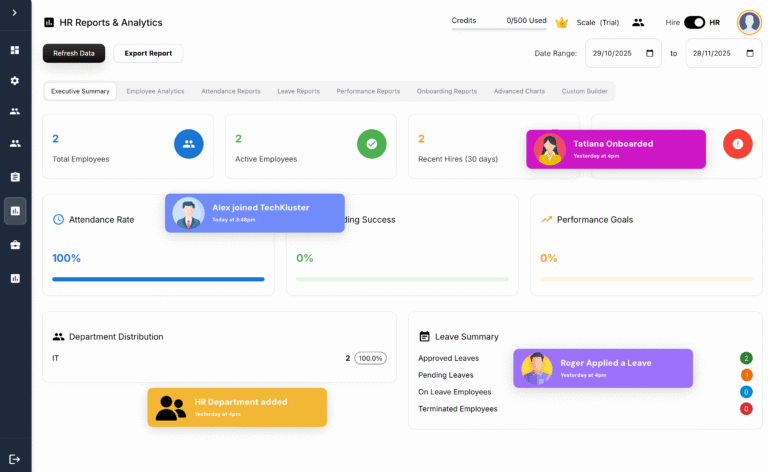How to Identify and Overcome Recruitment Bottlenecks to Attract Top Talent A strong hiring pipeline is the backbone of successful recruitment. Yet, many companies struggle with weak pipelines that lead to missed opportunities, delayed hires, and frustrated teams. If you’re facing challenges like low applicant quality, high drop-off rates, or disorganized hiring processes, your pipeline …
How to Identify and Overcome Recruitment Bottlenecks to Attract Top Talent
A strong hiring pipeline is the backbone of successful recruitment. Yet, many companies struggle with weak pipelines that lead to missed opportunities, delayed hires, and frustrated teams. If you’re facing challenges like low applicant quality, high drop-off rates, or disorganized hiring processes, your pipeline may be broken. The good news? With the right strategies and tools, you can fix it. Here’s how.
1. Low Applicant Quality
The Problem:
If your pipeline is flooded with unqualified candidates, your sourcing strategy is likely to blame. Posting jobs on the wrong platforms or using vague job descriptions can attract mismatched applicants.
Why It Matters:
- Wastes time: Recruiters spend hours sifting through irrelevant resumes.
- Misses top talent: High-quality candidates may never see your job postings.
The Fix:
- Expand your reach: Use an ATS like TechKluster Hire to post jobs on 100+ platforms, including niche boards and social media.
- Leverage AI-driven screening: Automatically filter resumes based on skills, experience, and keywords to surface the best candidates.
- Refine your targeting: Use data to identify which platforms drive the most qualified applicants and focus your efforts there.
Example:
A tech company struggling with low-quality applicants started using TechKluster Hire to post jobs on GitHub and Stack Overflow. Within weeks, they saw a 50% increase in qualified candidates.
2. High Candidate Drop-Off Rate
The Problem:
If candidates abandon your application process midway, it’s a sign of friction. Long applications, unclear instructions, or poor communication can drive them away.
Why It Matters:
- Loses top talent: 60% of candidates drop out of lengthy applications (CareerBuilder).
- Damages employer brand: Negative experiences lead to bad reviews and deter future applicants.
The Fix:
- Simplify applications: Reduce form fields to the essentials (e.g., resume upload and contact info).
- Automate follow-ups: Use TechKluster Hire to send personalized updates and reminders, keeping candidates engaged.
- Optimize for mobile: Ensure your application process is seamless on smartphones, where 60% of candidates apply.
Pro Tip:
Add a progress bar to your application form to show candidates how close they are to completion. This small change can reduce drop-offs by 20%.
3. Lack of Collaboration Between Hiring Teams
The Problem:
When hiring managers, recruiters, and interviewers aren’t aligned, the process becomes chaotic. Delayed feedback, missed updates, and inconsistent evaluations slow things down.
Why It Matters:
- Delays hiring: Waiting for feedback can stretch the process by weeks.
- Frustrates candidates: Disorganization makes your company look unprofessional.
The Fix:
- Centralize communication: Use TechKluster Hire to store candidate profiles, feedback, and ratings in one place.
- Set clear timelines: Establish deadlines for feedback (e.g., 24 hours post-interview) to keep the process moving.
- Standardize evaluations: Use structured scorecards to ensure fair and consistent assessments.
Example:
A retail company reduced time-to-hire by 30% after implementing TechKluster Hire to streamline collaboration between hiring teams.
4. No Insights Into Recruitment Performance
The Problem:
Without data, it’s impossible to know what’s working and what’s not. Are your job boards effective? Why do candidates drop off after the first interview? Without answers, you’re flying blind.
Why It Matters:
- Wastes resources: Spending on ineffective strategies.
- Stunts growth: No way to improve hiring quality or efficiency.
The Fix:
- Track key metrics: Use TechKluster Hire Analytics to monitor:
- Time-to-hire: How long it takes to fill roles.
- Source of hire: Which platforms drive the best candidates.
- Drop-off rates: Where candidates lose interest.
- Identify trends: Use data to spot patterns (e.g., seasonal hiring spikes) and adjust your strategy.
- Measure ROI: Calculate cost-per-hire and optimize your budget.
Case Study:
A healthcare provider used analytics to discover that 70% of top hires came from employee referrals. By doubling down on their referral program, they reduced cost-per-hire by 25%.
Bonus: 3 More Common Pipeline Problems
1. Inefficient Sourcing
- Problem: Relying solely on job boards limits your reach.
- Fix: Use TechKluster Hire to tap into passive talent pools via LinkedIn and social media.
2. Poor Employer Branding
- Problem: Candidates can’t find positive reviews or culture insights.
- Fix: Showcase your team on social media and respond to Glassdoor reviews.
3. Inflexible Interview Processes
- Problem: Rigid formats fail to assess true potential.
- Fix: Use skills-based assessments (e.g., coding challenges or case studies).
The Cost of a Broken Hiring Pipeline
| Scenario | Companies That Fix Issues | Companies That Don’t |
|---|---|---|
| Time-to-Hire | 15 days | 45+ days |
| Cost-Per-Hire | $3,000 | $6,000+ |
| Candidate Satisfaction | 4.5/5 stars | 2/5 stars |
| Offer Acceptance Rate | 85% | 40% |
How to Build a High-Performing Hiring Pipeline
- Audit your process: Identify bottlenecks (e.g., slow feedback) with surveys or analytics.
- Invest in automation: Tools like TechKluster Hire streamline sourcing, screening, and communication.
- Train your team: Teach hiring managers to write better job descriptions and give timely feedback.
- Monitor continuously: Review metrics monthly to stay ahead of trends.
Conclusion: Fix Your Pipeline, Secure Top Talent
A broken hiring pipeline doesn’t just slow you down—it costs you top talent, damages your employer brand, and hurts your bottom line. By addressing common bottlenecks like low applicant quality, high drop-off rates, and poor collaboration, you can build a pipeline that delivers results.
Ready to Fix Your Hiring Pipeline?
Discover how TechKluster Hire can help you attract, engage, and hire the best talent faster. Start your free trial today and transform your recruitment process.





